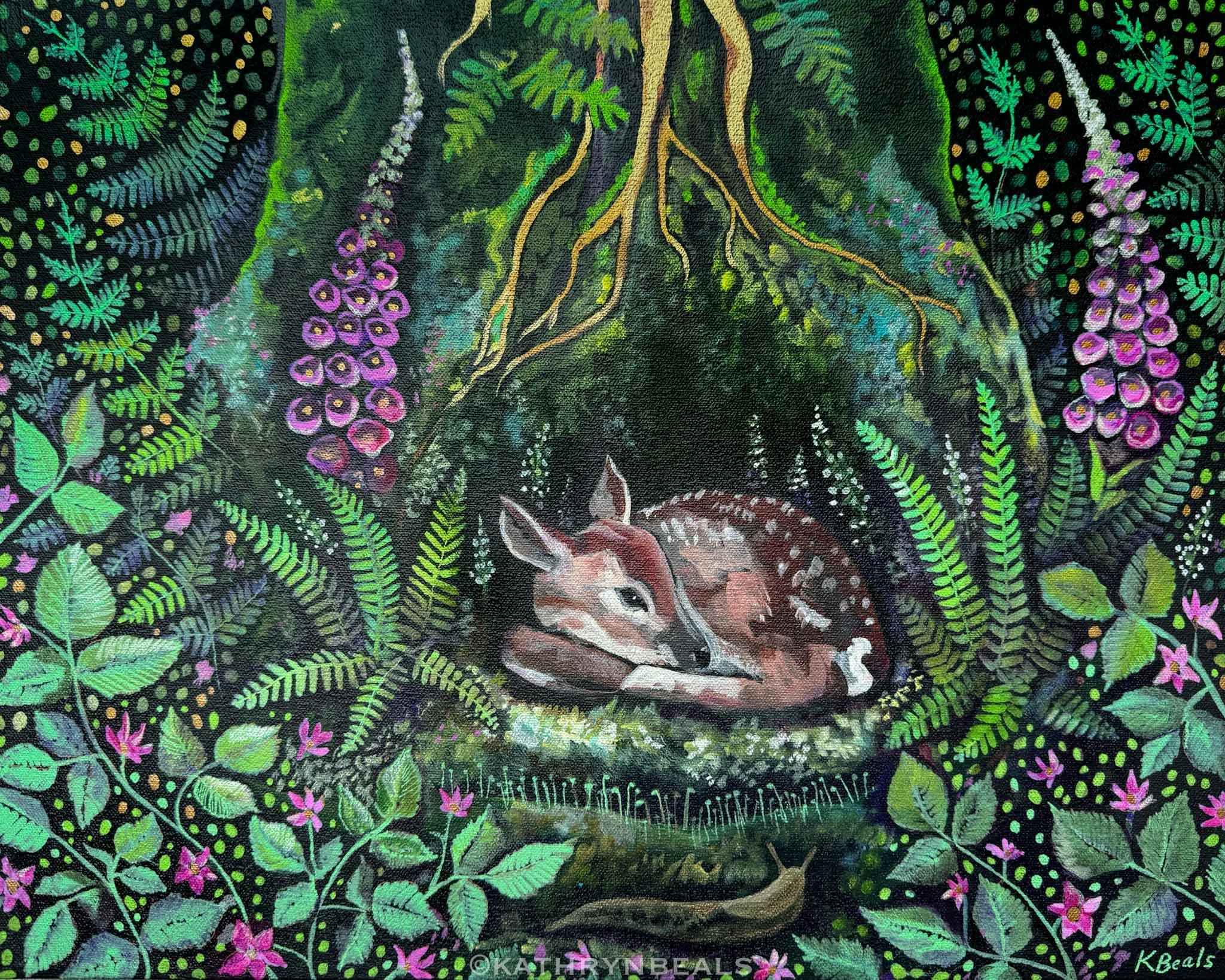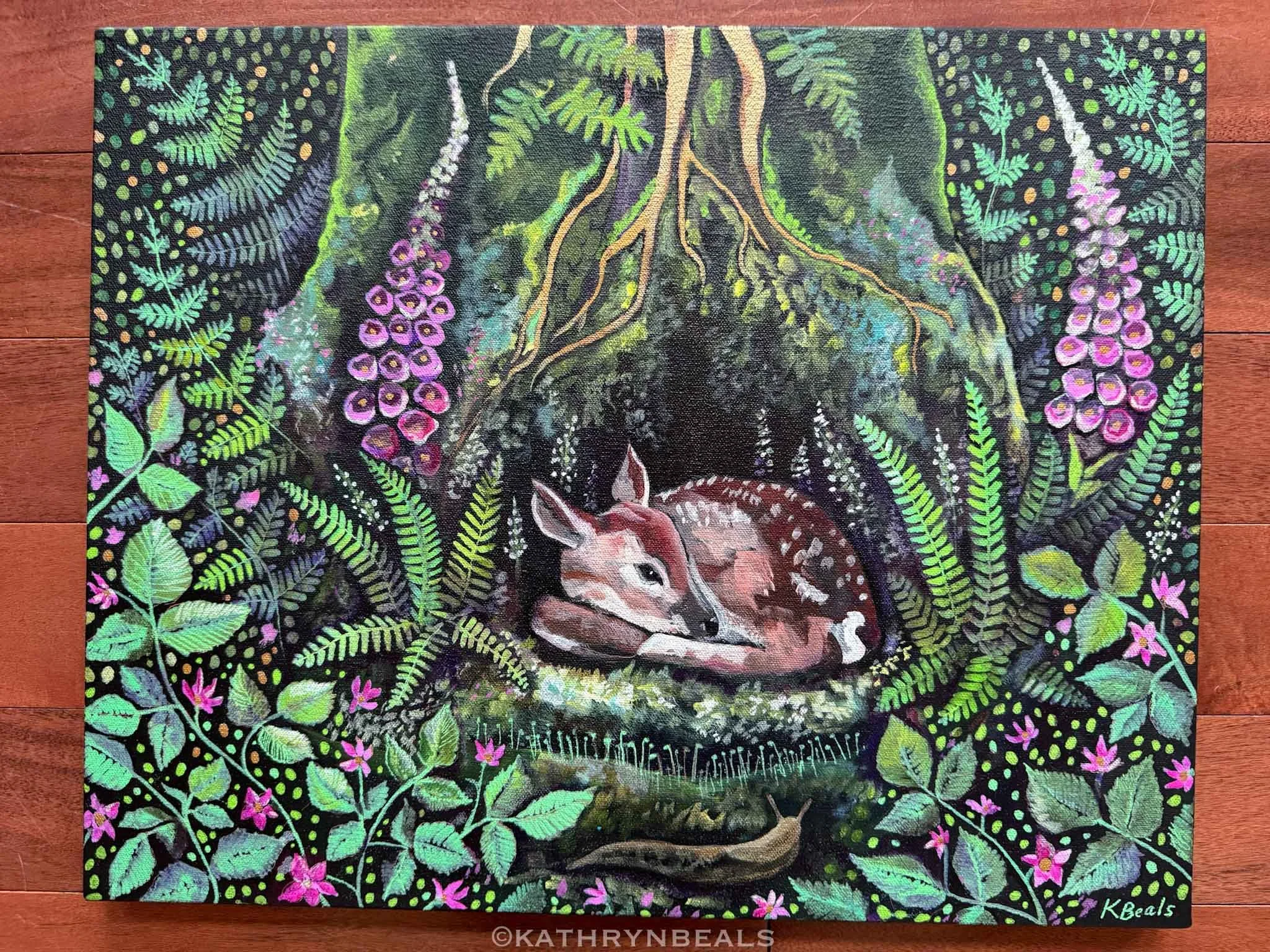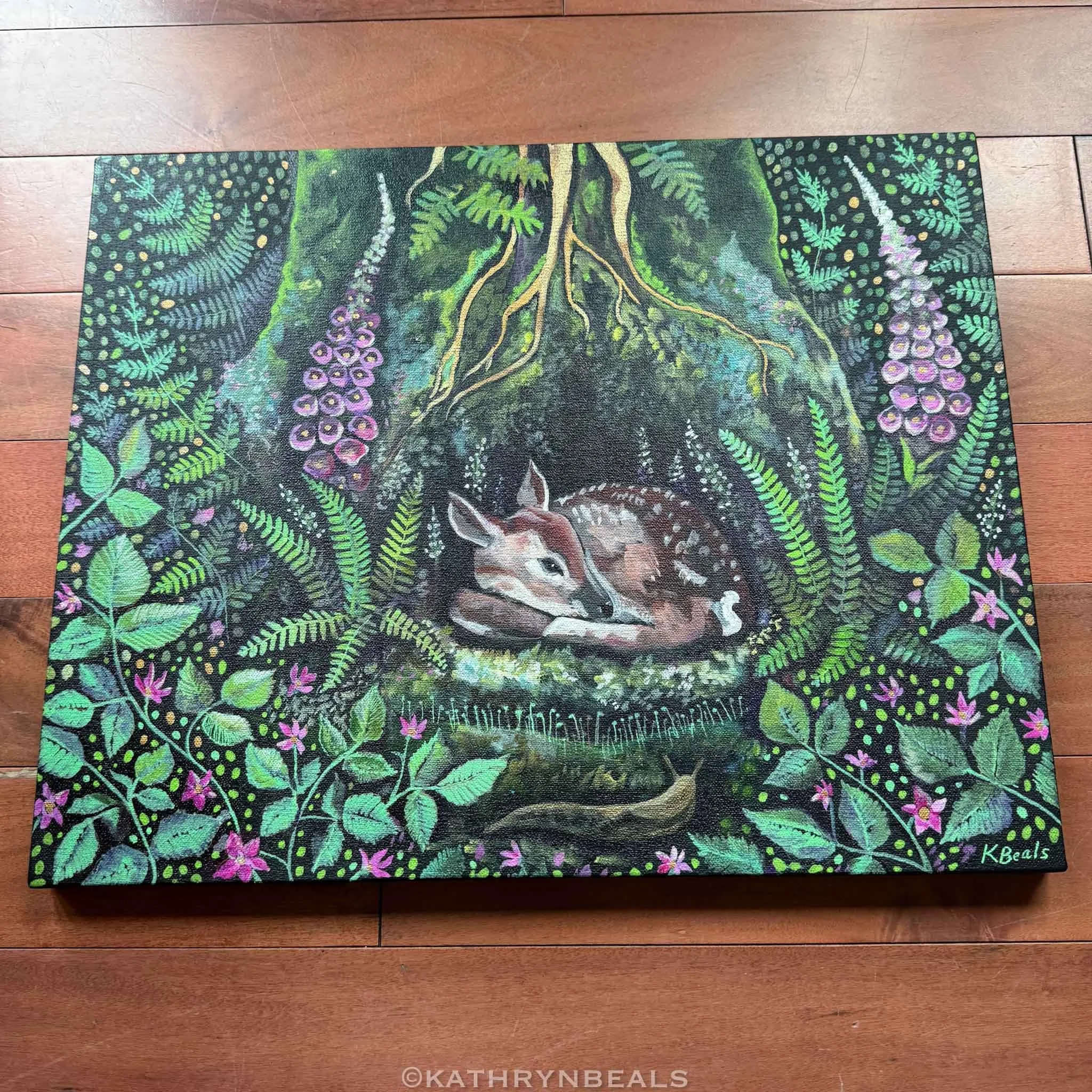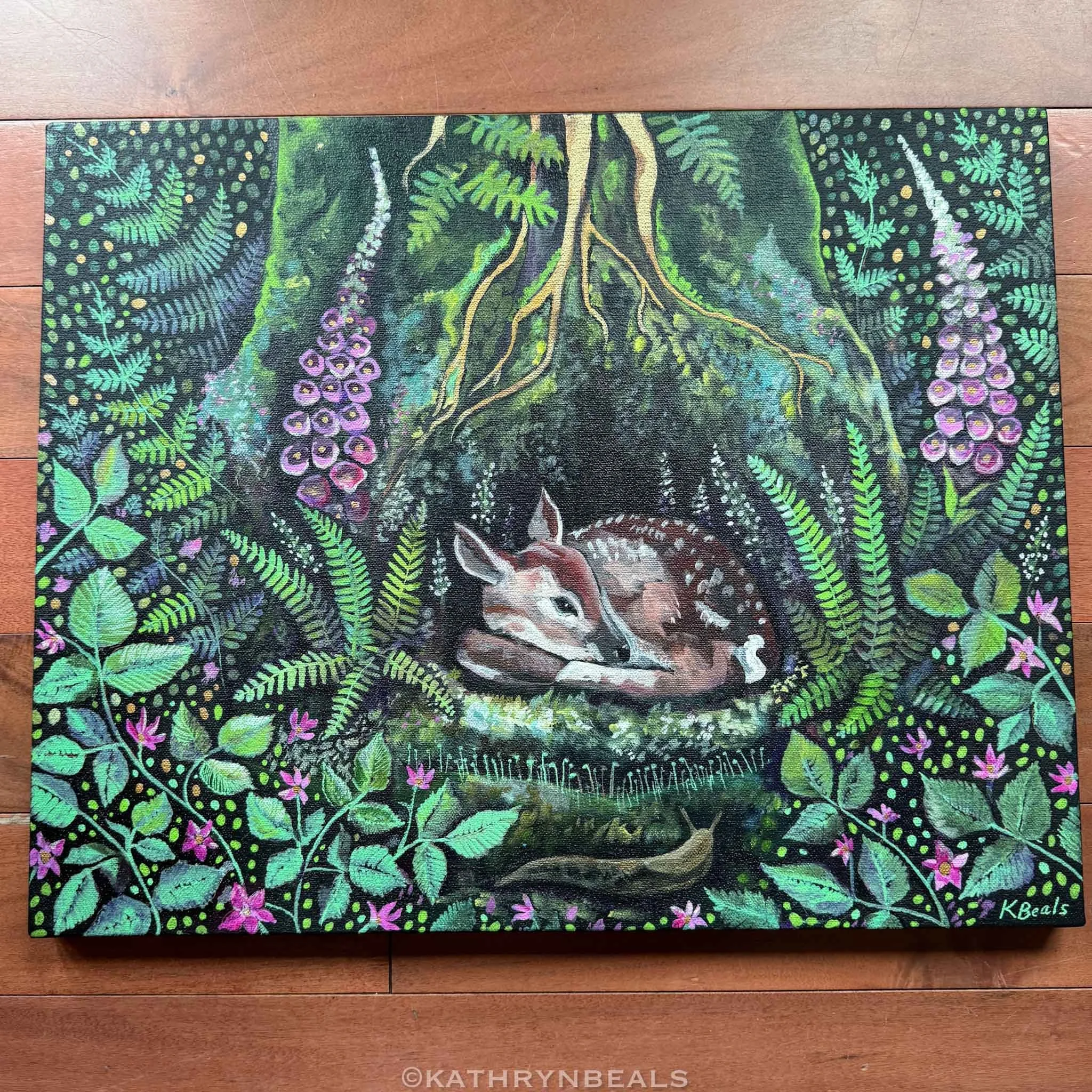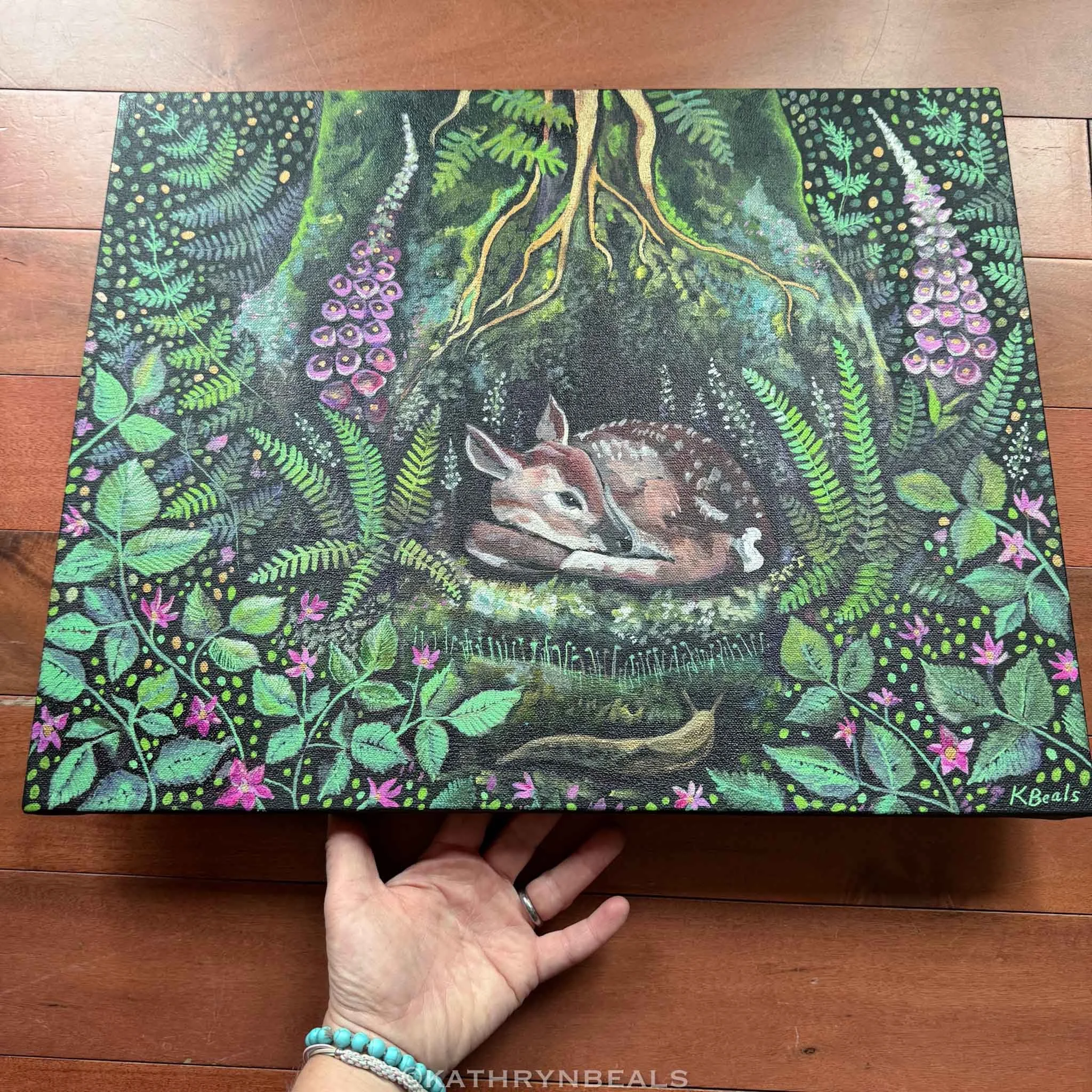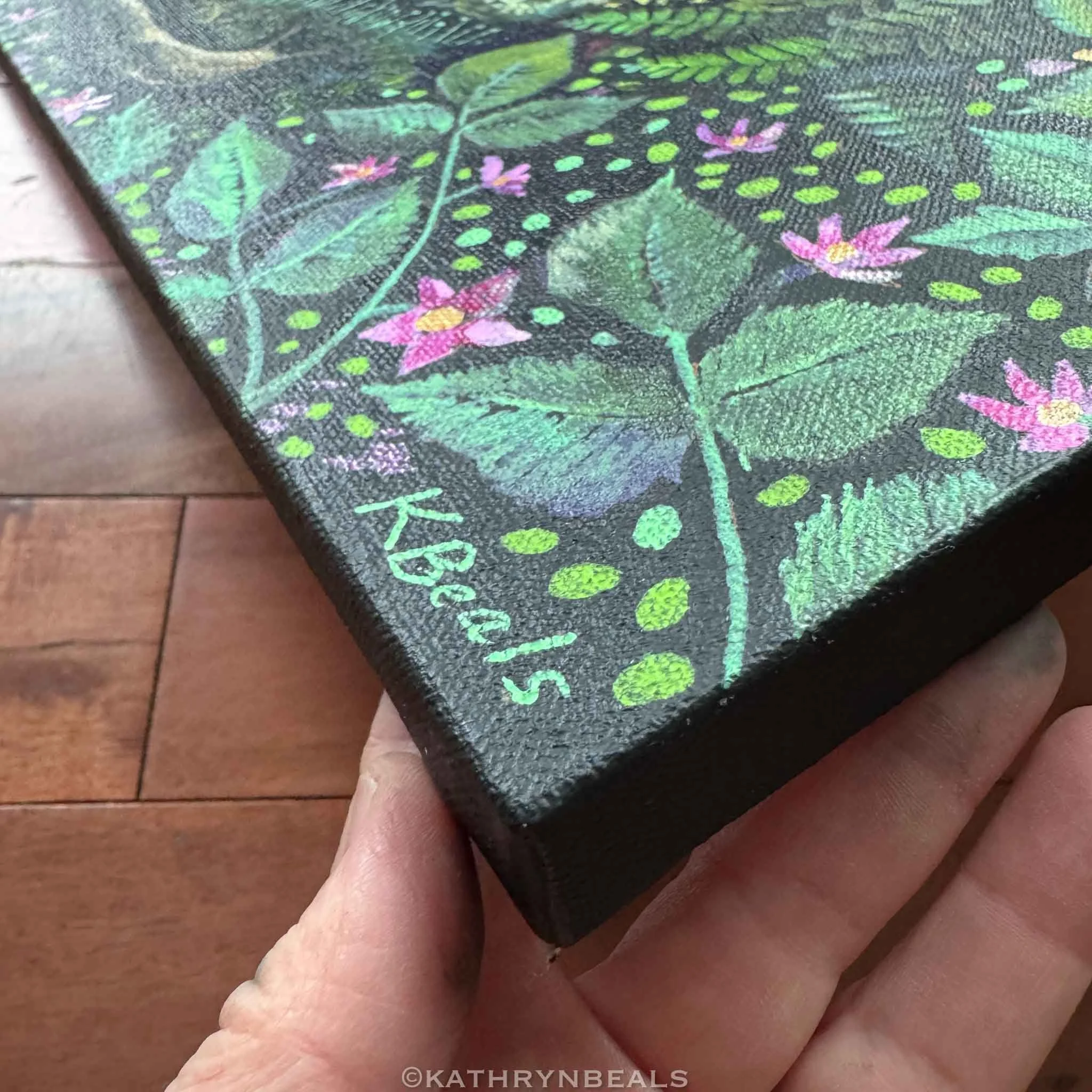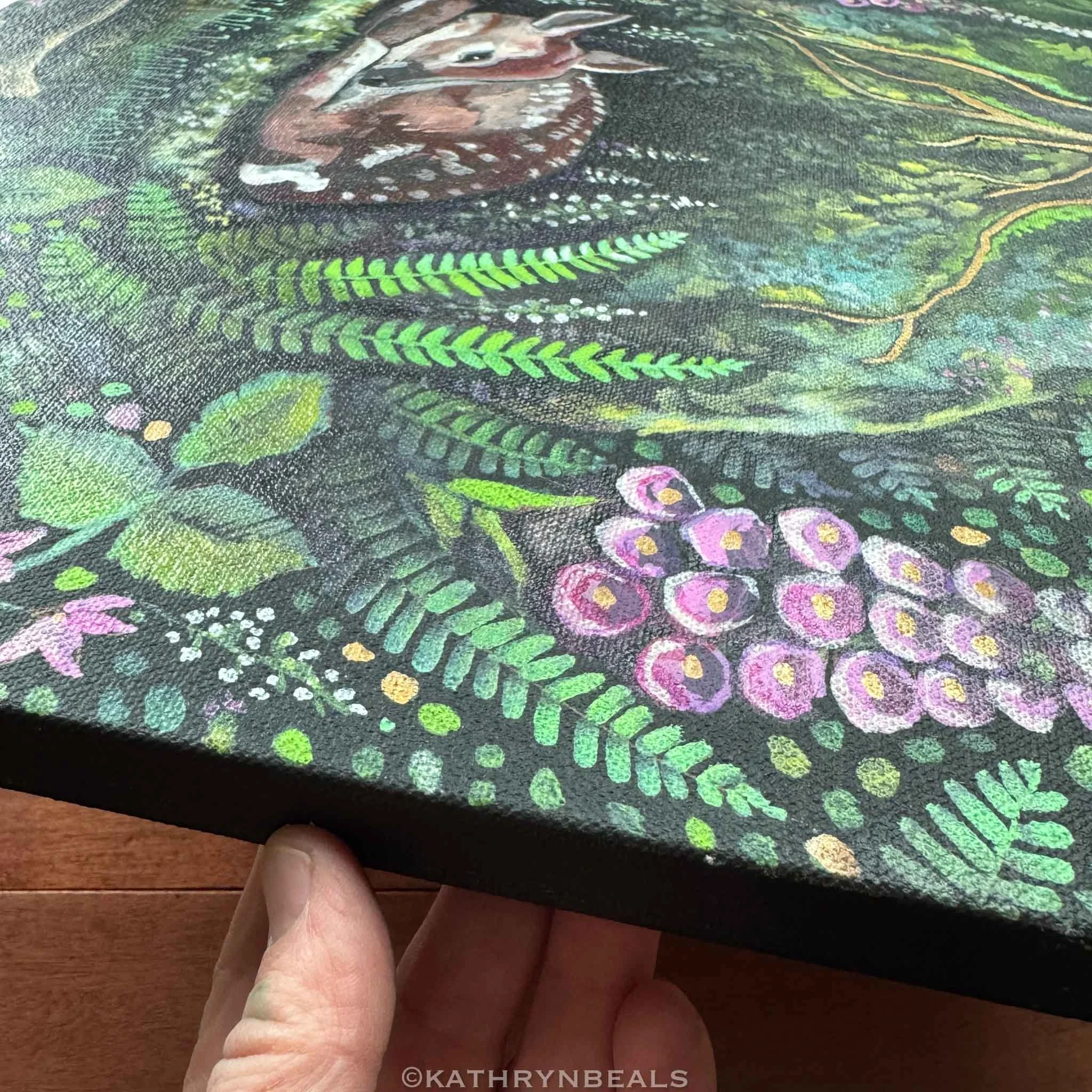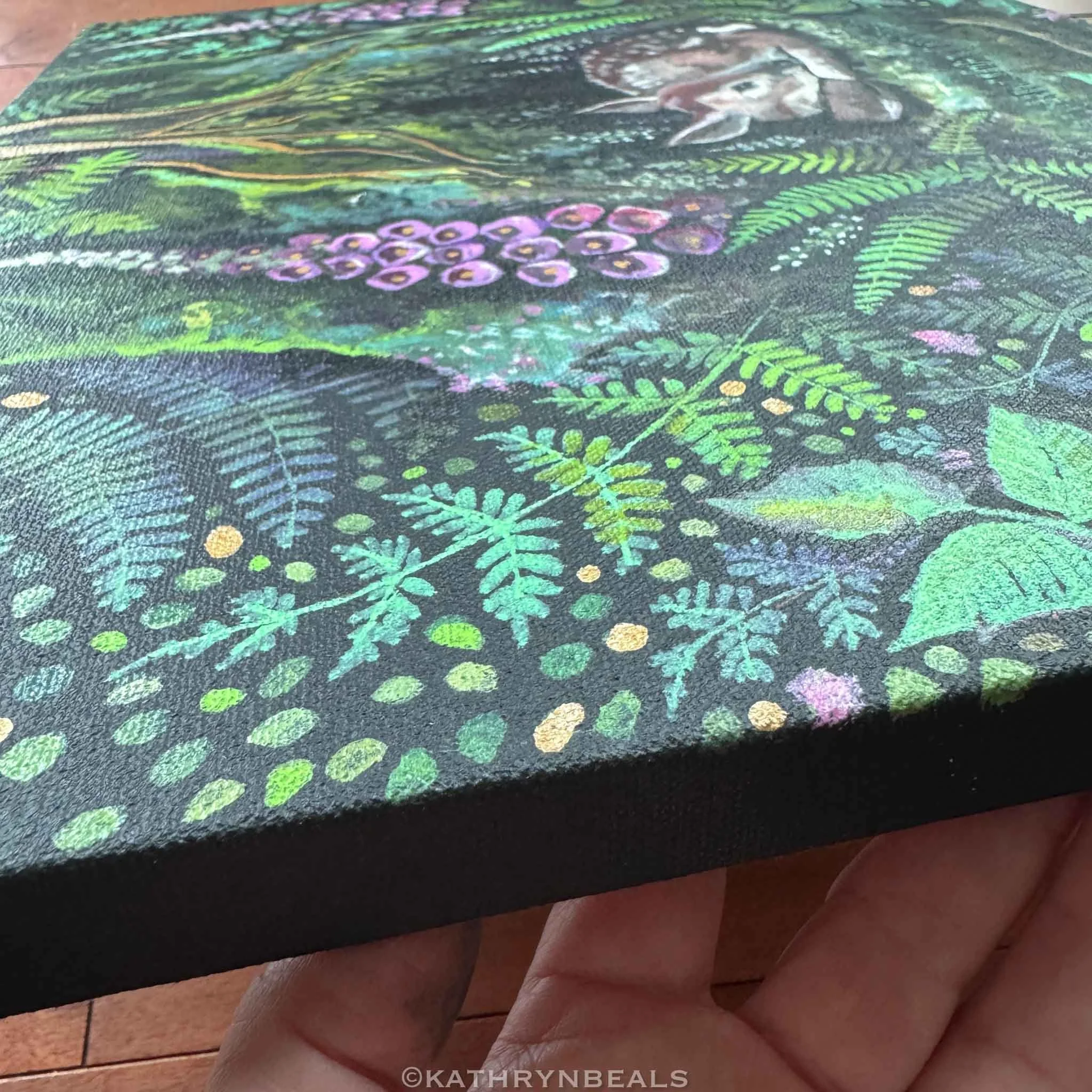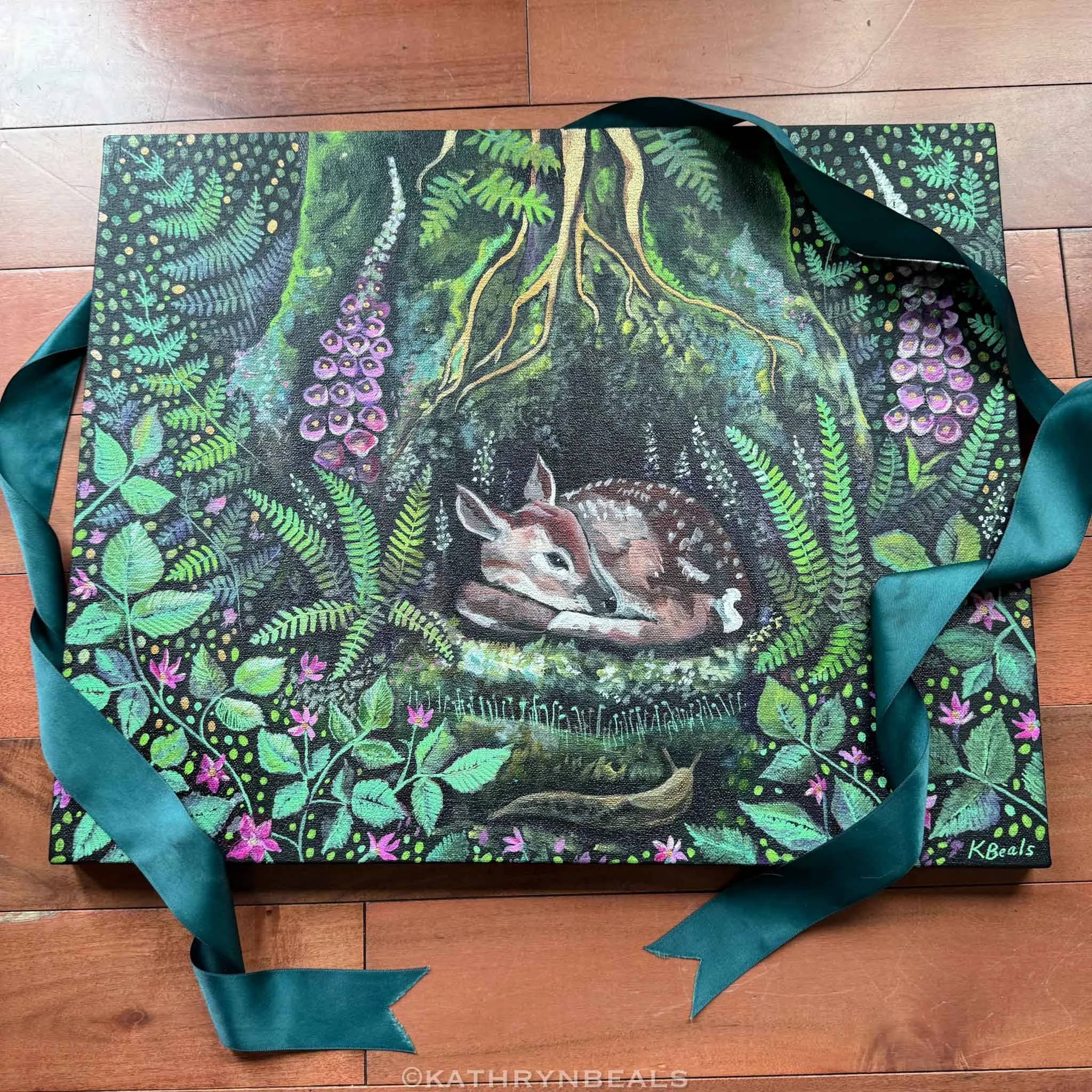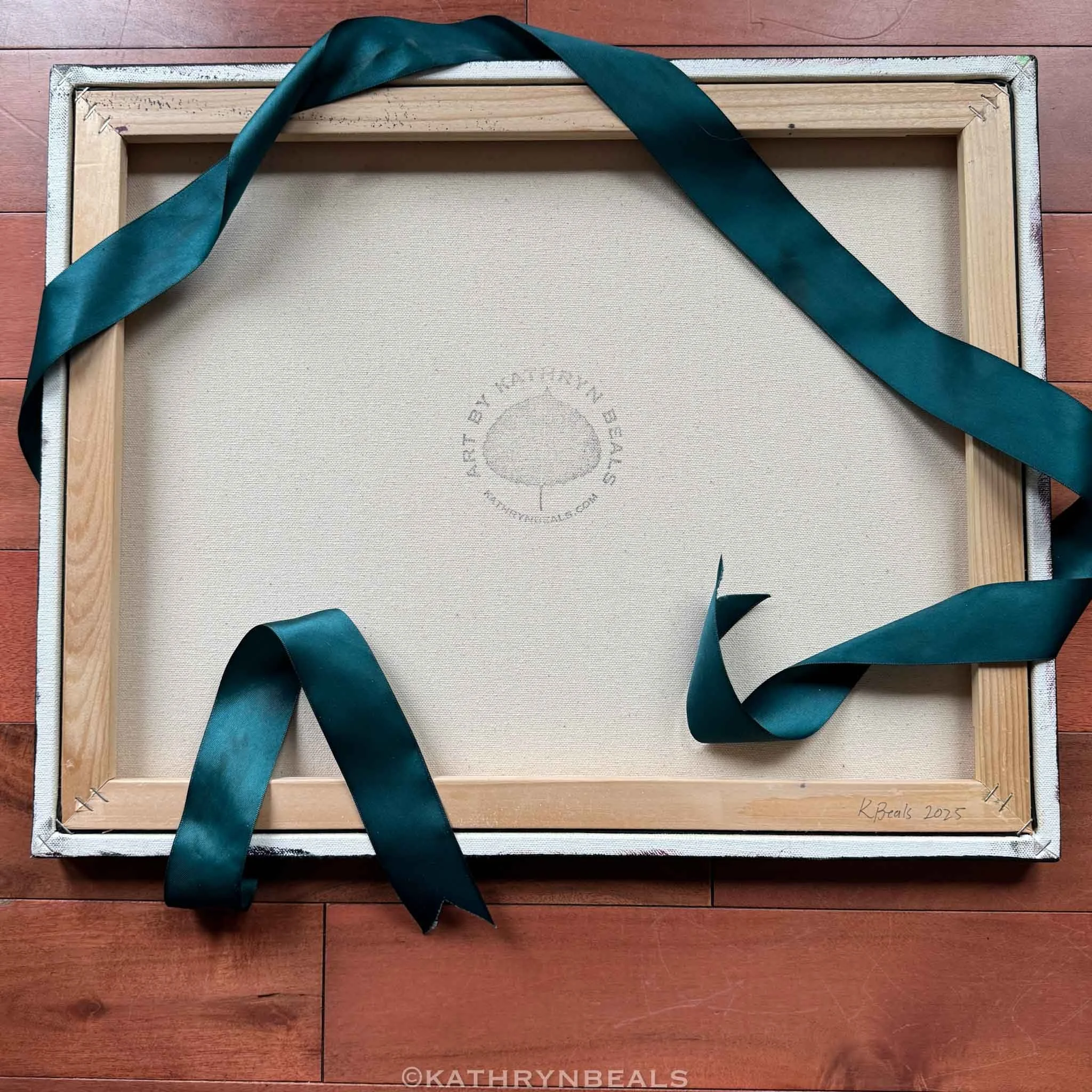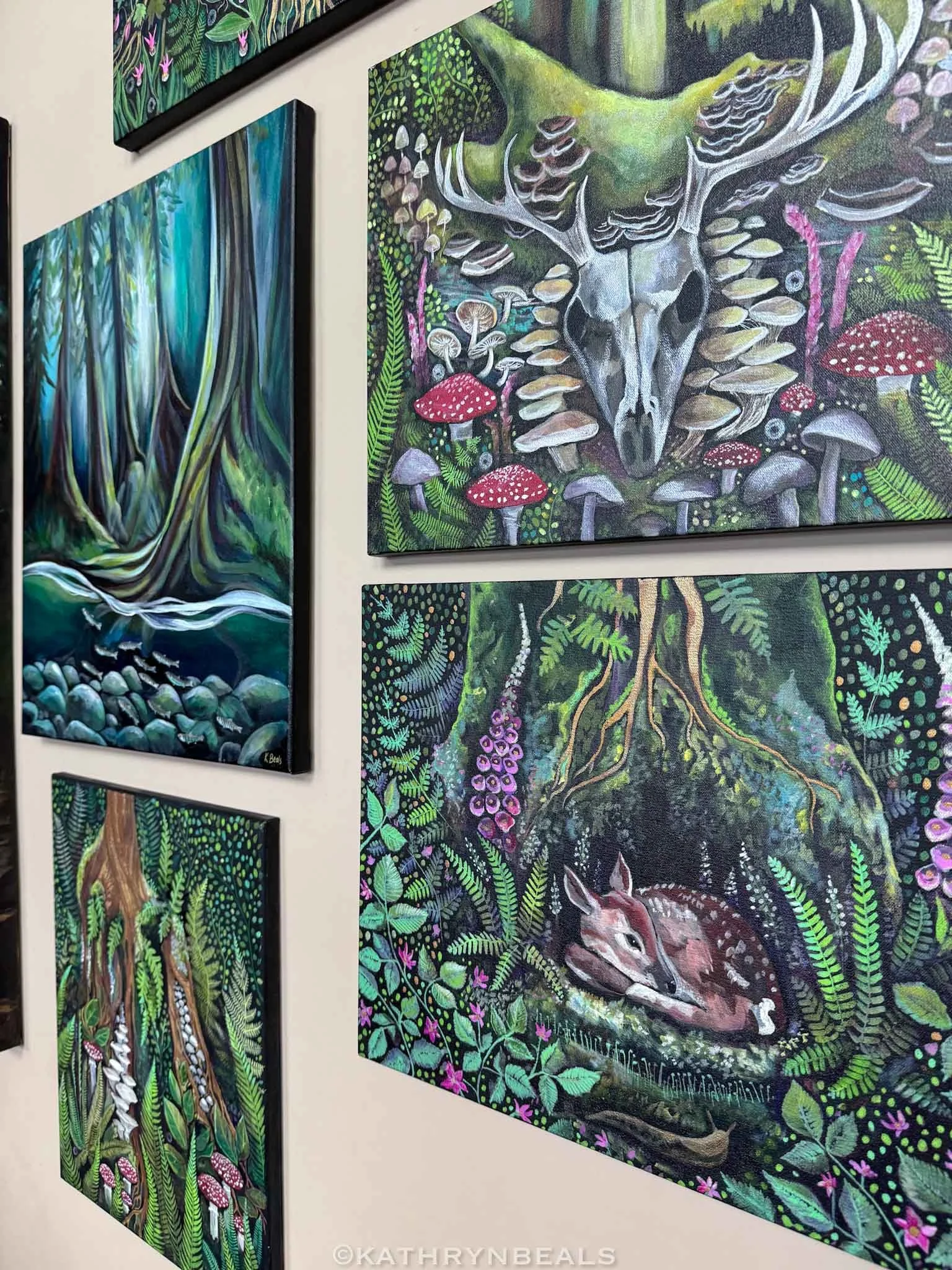About this Species
Much artistic license was taken with the Forest Floor series, and composition often won out over biological correctness, However, here are a few of the species Kathryn chose to honour in this painting:
White tailed Deer
These large, herbivorous mammals have adapted to a wide range of habitats in north America. Females give birth to one to three spotted young in late spring. Newborn fawns have spots when they are very young to camouflage them in the vegetation while their mothers are out foraging.
Banana slug
Banana slugs are important detrivores, or decomposers of the forest floor.They can be many shades of brown, yellow, green or even spotted, to blend in with the leaf litter.Banana slugs live 1-7 years and are common in coastal forests from California to Alaska.
Red Huckleberry
This evergreen shrub has small delicate rounded leaves, and produces bright red berries which are eaten by many forest species in the summer and fall.
Deer fern
This low-growing fern is native to the Pacific Northwest, and is an important winter foraging food for the deer of the coastal areas.
Bracken Fern
The bracken fern, Pteridium aquilinum, is one of the oldest plants in the fossil record, and its intricate fronds can grow to 16 feet high.This fern is beautiful and fast spreading, though toxic to humans and animals.It can reproduce via airborne spores or underground rhizomes.
Western Redcedar
This large evergreen tree has huge cultural and ecological importance in the Pacific Northwest. It has distinctive overlapping scale-like needles and soft bark in vertical strips. These trees grow in moist, shaded areas and can live for thousands of years.

